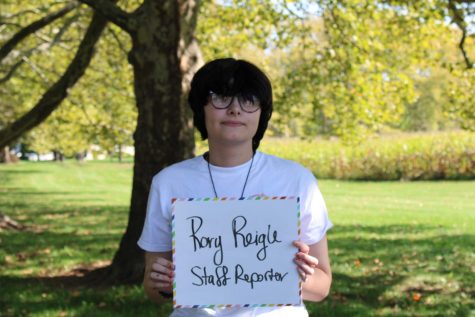Gender differences impact autism diagnosis and support
Autism is a broad-spectrum disorder, it is not best represented by a single line
Autism Spectrum Disorder (ASD) is often misunderstood or not understood. There could be many reasons for this. For one, perhaps there isn’t enough information being spread about it to the masses, especially correct information. Also, neurotypical people may see the disorder through their own lens, not considering that at times others have a completely different way of looking at things. Could this be why many autistic individuals have gone undiagnosed? Those assigned female at birth (AFAB) are particularly likely to go undiagnosed.
There is a lot of heated discussion about whether there is a social or genetic reason that more individuals assigned male at birth (AMAB) are noticed as autistic. AFAB people can be autistic. It’s just a matter of whether their symptoms are noticed and evaluated.
In fact, according to the Centers for Disease Control (CDC), one in every 42 AMAB individuals while one in every 189 AFAB individuals are diagnosed. So, if you think about this in terms of the diagnostic process, It could be possible that those who are AFAB are less likely to be born with ASD.
“Autism tends to be more male-oriented,” said Mr. Cotie Strong, SLHS school psychologist. “There is a genetic component to it, which can sway the odds.”
In an analysis of fifty-four studies, a report published by the National Libarary of Medicine shows that among 13,784,284 participants, 53,712 had ASD, including 43,972 boys and 9,740 girls. Overall, it seems that AMAB people present symptoms of ASD much more than AFAB people. Less than 22% of those in these studies were AFAB.
This brings up another idea entirely: what if those born female are not less likely to have ASD, but more likely to be overlooked or fly under the radar?
“When I say I’m autistic, I mean it,” senior Brianna Willits said. “Just because I was assigned female at birth doesn’t make [my autism] any less valid.”
Of course, there are ASD diagnostic assessments, but as science moves forward, we only realize more and more how far the symptoms stretch in all directions, and how wide the variety of this disorder is. It could be possible that one side of the spectrum is more talked about than the other.
Think of the phrase “if you meet one person with autism, you’ve met one person with autism.” Not all people with ASD are the same; there are nonvocal and vocal autistic individuals, autistic people who self-stimulate more or less than others, individuals who struggle terribly with sensory issues and others who barely do at all. The spectrum isn’t a line. There’s no such thing as being more or less autistic. ASD isn’t one dimensional, and there are many ways that someone might deal with it.
“People need to realize that autism isn’t linear, rather it’s a whole color wheel of symptoms and ranges,” Willits said. “I’m not ‘high-functioning’ because I excel in communication and perception, I still have meltdowns and sensory issues. In the end, the terms ‘low-functioning’ and ‘high-functioning’ don’t make sense because everyone is different; my color wheel just so happens to have some categories filled out more so than others.”
So what if the explanation, in part, is exactly that? Those born female may just cope with their symptoms in a whole other way, or have differing symptoms that remain in the dark, perceived as symptoms of other disorders or not perceived at all.
We must work together to make this system better and make things work for everyone and not just the majority. Then, perhaps no young girls (or otherwise identifying children) will have to feel like they’re outcast somehow, different but still not different enough to be diagnosed.
“It is important as educators and staff to keep our eyes and ears open,” said Ashley Reigle, an instructional assistant in autistic support at East Penn. “That way we can provide resources for our autistic students to help them feel more comfortable in their bodies and environment and help them push themselves forward to successful outcomes. This goes for all students with ASD, including girls and boys alike.”

Senior Rory Reigle is a third-year staff reporter for the Spotlight. Rory participates in GSA, and enjoys writing, reading, and painting in their free...


